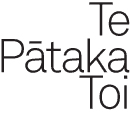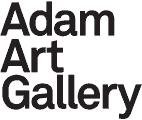Public Programme: Billy Apple New York 1969-1973 / Deep Listening
ONE DAY SCULPTURE
Billy Apple, Less is Moore
Salamanca Lawn, Botanic Gardens
Saturday 28 March
12am-12pm
For One Day Sculpture – a New Zealand-wide series of temporary public art works, conceived by British curator Claire Doherty for the Litmus Research Initiative at Massey University – Billy Apple engaged with Henry Moore’s Bronze Form (1985-6) – one of Wellington’s best known public sculptures and the only outdoor work by this legendary British modern artist in New Zealand – in a manner characteristic of his practice and its intentions. Treating this work as his subject, Apple drew attention to a set of issues specific to Moore’s work in its Wellington location to raise vital questions about the role and fate of art in public space. For further information and documentation check www.onedaysculpture.org.nz
DISCUSSION
Is less more? Debating Apple on Moore
One Day Sculpture discussion
von Kohorn Room, Museum of Wellington
Thursday 23 April 2009
5.30-7pm
Following on from Billy Apple’s One Day Sculpture, this discussion picked up on Apple’s project, to assess the validity of his proposition “Less is Moore” and canvass the history of Moore’s sculpture and its place in his oeuvre. In association with the Museum of Wellington, this public forum provided an opportunity for a range of key stakeholders to share their points of view and involve the public in debating the issues raised.
Panel speakers included: Christina Barton (Director of the Adam Art Gallery and curator of the exhibition Billy Apple New York 1969-1973), Vikki Muxlow (Parks and Gardens, WCC); Jack Fry (Freelance conservator); Neil Plimmer (Wellington Sculpture Trust); Jeanne Macaskill (artist), Carolina Izzo (art conservator) chaired by David Cross (Litmus Research Initiative Director, Massey University)
ARTIST’S TALK
Billy Apple on New York
Adam Art Gallery
Friday 24 April
12-1pm
Billy Apple is a conceptual artist who is known for his rigorous investigation of the sites, systems and social relations that structure the art world. After studying graphic design in London and contributing to early pop art in Britain he left for New York in 1964. Apple lived there until 1990 before returning to New Zealand, where he continues to work and exhibit widely. Over a career spanning 50 years he has produced objects, text pieces, photographs, installations and undertaken actions that test definitions of art, challenge the structuring suppositions of artistic identity, expose the workings of the art system and demonstrate art’s permeability to larger social, political and economic forces.
Billy Apple and exhibition curator and Director of the Adam Art Gallery, Christina Barton, gave a tour of the exhibition Billy Apple New York 1969-1973, which focused on the short but intense period in which Apple ran a small not-for-profit gallery at 161 West 23rd Street as a venue for his own work and for others who shared his ambition to test the definitions of art making and find new models that would serve as an alternative to the commercial gallery system. This was a rare opportunity to hear first-hand what it was like to be in New York at this time and to gain insights into the alternative art scene that fostered the radical practices that were galvanising the art scene in New York in the early 1970s.
FILM SCREENING
Conceptual Paradise
New Zealand Film Archive
84 Taranaki Street
Wednesday 6 May
7pm
The documentary essay Conceptual Paradise: There Is a Place for Sophistication directed by Stefan Römer traces out the debates that allowed the intellectual art movement of conceptual art to emerge in the 1960s, and which has subsequently led to the most relevant questions in contemporary art.
Featuring some of the most interesting and dynamic artists and art theorists alive today, the documentary presents a diversity of voices to show conceptual art as a socio-historical development of various movements; that it has no one valid definition. Yet there are several ideas that are framed throughout the documentary; the fiction and ideal of art as political engagement; the history of art as a history of struggles around strategies of representation, and, in making a film about conceptual art, the trope of reflexivity that produces a study on the documentary as a genre in itself.
Artists:
Vito Acconci, Art & Language (Michael Baldwin, Mel Ramsden), Michael Asher, John Baldessari, Robert Barry, Hartmut Bitomsky, Mel Bochner, Gregg Bordowitz, Klaus vom Bruch, Daniel Buren, Victor Burgin, Luis Camnitzer, Jan Dibbets, Mark Dion, Sam Durant, Valie EXPORT, Stano Filko, Andrea Fraser, Liam Gillick, Dan Graham, Renée Green, Shilpa Gupta, Hans Haacke, Július Koller, Joseph Kosuth, Sonia Khurana, David Lamelas, Sol LeWitt, Thomas Locher, Marcel Odenbach, Yoko Ono, John Miller, Adrian Piper, Yvonne Rainer, Allen Ruppersberg, Ed Ruscha, Martha Rosler, Allan Sekula, Peter Weibel, Lawrence Weiner, Stephen Willats, Heimo Zobernig
Curators/Theorists:
Alexander Alberro, Benjamin H.D. Buchloh, Sabeth Buchmann, Charles Harrison (Art & Language), Geeta Kapoor, Geert Lovink, Seth Siegelaub, Gregor Stemmrich.
PERFORMANCE
SOUNDCHECK
Silent Spring
Adam Art Gallery
Friday 3 April
9-10pm
Silent Spring presented a roaming sound performance throughout the gallery spaces of the Adam Art Gallery to directly engage the audience in an alternative form of audience/performer dynamic within this setting. The audience sat within a murky forest of sound, built up by the orbiting performers, who in mapping out the site used acoustic sounds looped and layered to reflect the work’s accumulative state based on actions over time. By displacing the expected directional focus and continuity of the evening concert format, Silent Spring sidestepped the usual focus on the individual performer and tested the temporal nature of traditional sound performance in a collaborative project designed specifically for the critical forum of the Adam Art Gallery.
Silent Spring includes:
Tim Coster, Auckland sound artist and curator who works with installations, performances and audio releases.
Shannon O’Brien, artist and facilitator of sound and performance-related projects in Christchurch.
Joshua Rutter, artist, freelance dancer and choreographer from Auckland.


